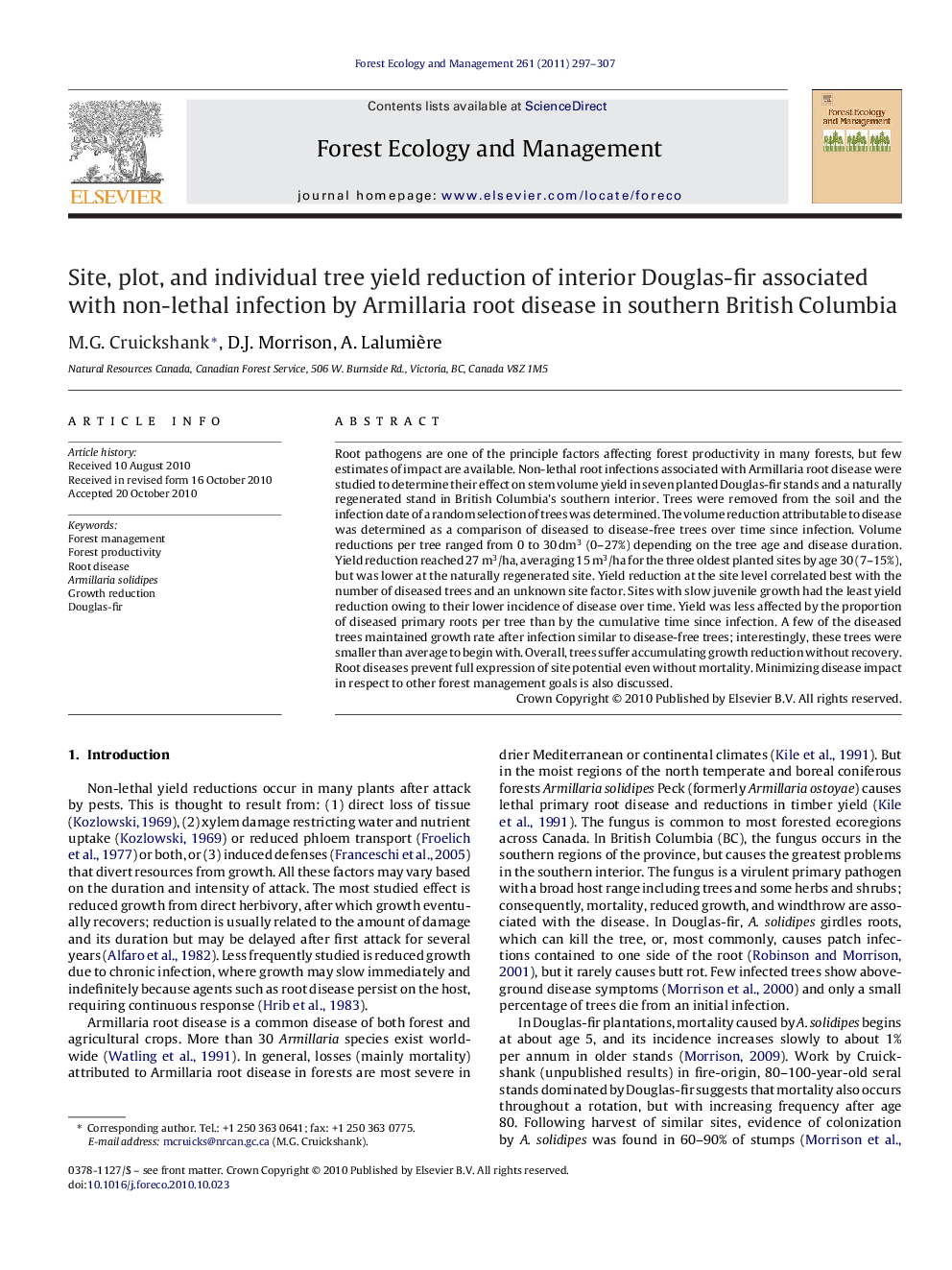| کد مقاله | کد نشریه | سال انتشار | مقاله انگلیسی | نسخه تمام متن |
|---|---|---|---|---|
| 88175 | 159287 | 2011 | 11 صفحه PDF | دانلود رایگان |

Root pathogens are one of the principle factors affecting forest productivity in many forests, but few estimates of impact are available. Non-lethal root infections associated with Armillaria root disease were studied to determine their effect on stem volume yield in seven planted Douglas-fir stands and a naturally regenerated stand in British Columbia's southern interior. Trees were removed from the soil and the infection date of a random selection of trees was determined. The volume reduction attributable to disease was determined as a comparison of diseased to disease-free trees over time since infection. Volume reductions per tree ranged from 0 to 30 dm3 (0–27%) depending on the tree age and disease duration. Yield reduction reached 27 m3/ha, averaging 15 m3/ha for the three oldest planted sites by age 30 (7–15%), but was lower at the naturally regenerated site. Yield reduction at the site level correlated best with the number of diseased trees and an unknown site factor. Sites with slow juvenile growth had the least yield reduction owing to their lower incidence of disease over time. Yield was less affected by the proportion of diseased primary roots per tree than by the cumulative time since infection. A few of the diseased trees maintained growth rate after infection similar to disease-free trees; interestingly, these trees were smaller than average to begin with. Overall, trees suffer accumulating growth reduction without recovery. Root diseases prevent full expression of site potential even without mortality. Minimizing disease impact in respect to other forest management goals is also discussed.
Research highlights▶ Site potential is reduced by root disease in the short and longer term. ▶ Armillaria solidipes causes growth reduction by non-lethal cryptic infections. ▶ Reduced yield correlates to time of first infection rather than infection intensity. ▶ Yield variation exists in Douglas-fir in response to a given level of infection. ▶ Site losses are governed largely by temporal incidence of belowground infections.
Journal: Forest Ecology and Management - Volume 261, Issue 2, 15 January 2011, Pages 297–307